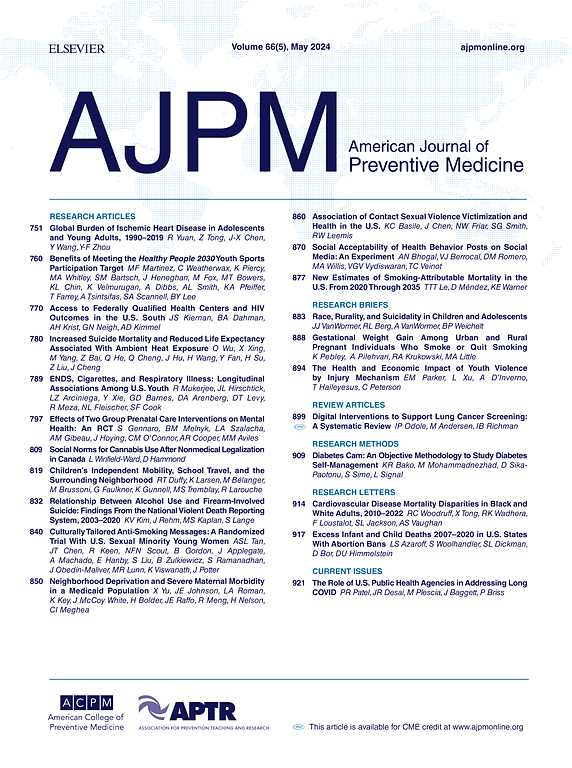AI-Assisted Painting Analysis for Early Alzheimer’s Screening: A Multicenter Validation Study
IF 4.5
2区 医学
Q1 MEDICINE, GENERAL & INTERNAL
引用次数: 0
Abstract
Introduction
To develop an AI-driven tool for early Alzheimer’s disease (AD) screening using digital painting analysis, aiming to address population health challenges through non-invasive, cost-effective risk stratification.
Method
A multicenter cohort of 320 participants (160 AD patients, 160 age-matched controls) completed neuropsychological assessments and digital freehand drawings on a digitizing tablet. A CNN-based AI model extracted 384 features from stroke patterns, color distribution, and temporal dynamics. Key discriminative features (reduced color diversity, fragmented lines) were validated against cognitive decline (MMSE scores) and longitudinal progression (n=80). Ethical compliance ensured anonymized data processing under GDPR/HIPAA.
Results
The AI model achieved 92% sensitivity and 85% specificity in identifying early-stage AD, outperforming traditional cognitive tests (e.g., MMSE). Reduced color diversity (AUC=0.87) and repetitive geometric motifs (p=0.003) emerged as robust predictors. Longitudinal data revealed progressive feature deterioration (r=0.71) linked to cognitive decline.
Discussion
This AI tool enables population-wide AD risk screening, aligning with preventive healthcare goals by facilitating early intervention. Its scalability and non-invasive nature support integration into routine health assessments, reducing the burden of undetected AD and advancing public health strategies for aging populations.
人工智能辅助绘画分析用于早期阿尔茨海默病筛查:一项多中心验证研究
开发一种人工智能驱动的工具,用于使用数字绘画分析进行早期阿尔茨海默病(AD)筛查,旨在通过非侵入性、成本效益高的风险分层来应对人群健康挑战。方法320名参与者(160名AD患者,160名年龄匹配的对照组)在数字化平板电脑上完成神经心理学评估和数字徒手绘画。基于cnn的人工智能模型从笔画模式、颜色分布和时间动态中提取了384个特征。针对认知能力下降(MMSE评分)和纵向进展(n=80)验证了关键的判别特征(颜色多样性减少,线条碎片化)。道德合规确保了GDPR/HIPAA下的匿名数据处理。结果人工智能模型识别早期AD的灵敏度为92%,特异性为85%,优于传统的认知测试(如MMSE)。减少的颜色多样性(AUC=0.87)和重复的几何图案(p=0.003)是稳健的预测因子。纵向数据显示进行性特征恶化(r=0.71)与认知能力下降有关。这一人工智能工具可实现全人群AD风险筛查,通过促进早期干预,与预防性医疗保健目标保持一致。它的可扩展性和非侵入性支持整合到常规健康评估中,减少未被发现的AD的负担,并推进老龄化人口的公共卫生战略。
本文章由计算机程序翻译,如有差异,请以英文原文为准。
求助全文
约1分钟内获得全文
求助全文
来源期刊

American Journal of Preventive Medicine
医学-公共卫生、环境卫生与职业卫生
CiteScore
8.60
自引率
1.80%
发文量
395
审稿时长
32 days
期刊介绍:
The American Journal of Preventive Medicine is the official journal of the American College of Preventive Medicine and the Association for Prevention Teaching and Research. It publishes articles in the areas of prevention research, teaching, practice and policy. Original research is published on interventions aimed at the prevention of chronic and acute disease and the promotion of individual and community health.
Of particular emphasis are papers that address the primary and secondary prevention of important clinical, behavioral and public health issues such as injury and violence, infectious disease, women''s health, smoking, sedentary behaviors and physical activity, nutrition, diabetes, obesity, and substance use disorders. Papers also address educational initiatives aimed at improving the ability of health professionals to provide effective clinical prevention and public health services. Papers on health services research pertinent to prevention and public health are also published. The journal also publishes official policy statements from the two co-sponsoring organizations, review articles, media reviews, and editorials. Finally, the journal periodically publishes supplements and special theme issues devoted to areas of current interest to the prevention community.
 求助内容:
求助内容: 应助结果提醒方式:
应助结果提醒方式:


